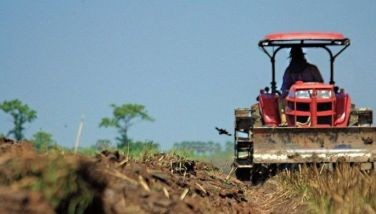Women play greater role in economic dev't
MANILA, Philippines - Far from the old mindset that women are confined at menial tasks at home, some 42,517 rural women across Mindanao actively share in economic development by engaging in agri-fishery enterprise.
Livelihood activities ranging from production of vegetables, rice, cut flower, fish vending, food processing, cattle and swine raising are among the popular livelihood activities women have accessed from the Department of Agriculture’s Mindanao Rural Development Program (DA-MRDP).
Funded through a loan from the World Bank and equity share of the national and local government units, MRDP is a long term poverty alleviation initiative implemented under the DA in partnership with 225 enrolled municipalities.
In the mid-term report of the MRDP to the World Bank, it said that of the 96,077 total beneficiaries, women comprise 44 percent where a total of 6,078 women in Region 9 has benefited; in Region 10 – 2,459; Region 11 – 12,357; Region 12 – 9,797; Caraga Region – 9,729 and the ARMM – 3,836.
“We have seen a very strong level of empowerment among the rural women here. They have organized themselves, identified their own projects and share in the overall development of their respective communities,” said program director Lealyn Ramos.
“The agriculture sector has always counted on the participation of women in improving rural economy that’s why, through MRDP we have provided them enough resources and the right opportunity to jump-start their participation,” she added.
WB, in the loan agreement, has required that these livelihood projects under the Community Fund for Agricultural Development (CFAD) component, the program should have been accessed by at least 15 percent by its total beneficiary as of mid-term.
But as the mid-term report shows, women beneficiaries accounted for 58.92 percent.
CFAD utilizes community demand-driven approach where women have to identify the livelihood projects that best suits their expertise, experience and resources available in the community.
 Melanie Rosauro of Sta. Josefa, Agusan del Sur shows off during the town’s Agri Fair Trade their fruits and vegetable harvests from their high value vegetable production financed under the DA’s Mindanao Rural Development Program.
Melanie Rosauro of Sta. Josefa, Agusan del Sur shows off during the town’s Agri Fair Trade their fruits and vegetable harvests from their high value vegetable production financed under the DA’s Mindanao Rural Development Program. “We also would like to congratulate the municipalities who are at the forefront of our implementation. Without their active participation it would have been difficult to achieve these feat. Our strong engagement with the LGUs has resulted to positive impact,” Ramos said.
She added that the municipal-based agri technicians also play a key role as they provide the technical requirements to these various livelihoods the POs have chosen for themselves.
CFAD has a total portfolio of P1.2 billion for the various livelihood projects at various level of implementation where P324.36 million has been reported as completed sub-projects and enjoyed by the beneficiaries; P146.86 million are on-going; P317.92 million are ready for implementation; and P392.28 million are under preparation stage.
Lilian Testado of Libungan, North Cotabato said their goat and duck raising projects started in the year 2000 has gone a long way.
“Our project has made us send our children to school comfortably. In fact, some of our colleagues’ children has finished college degrees though the income of our small livelihoods,” she said.
Testado is a member of the Sinawingan Consortium whose organization has further ventured to micro-lending, rice production and cattle dispersal. Their organization to date has total assets and stocks of P1,038,000.
“Aside from just holding broom and rugs, our projects made us use calculator, ballpens and even computers,” she said.
In the experience of Melanie Rosauro, a vegetable farmer in Agusan del Sur, her family’s engagement with the program livelihood program has allowed them to put a decent home for their family.
“We’ve heard success stories of many rural women and we consider them as important milestones in rural development. But we will not sit on our laurels. Instead, we will be inspired to do more and reach out to more people as Mindanao needs more economic opportunities than what the program can provide,” Ramos said.
- Latest






























